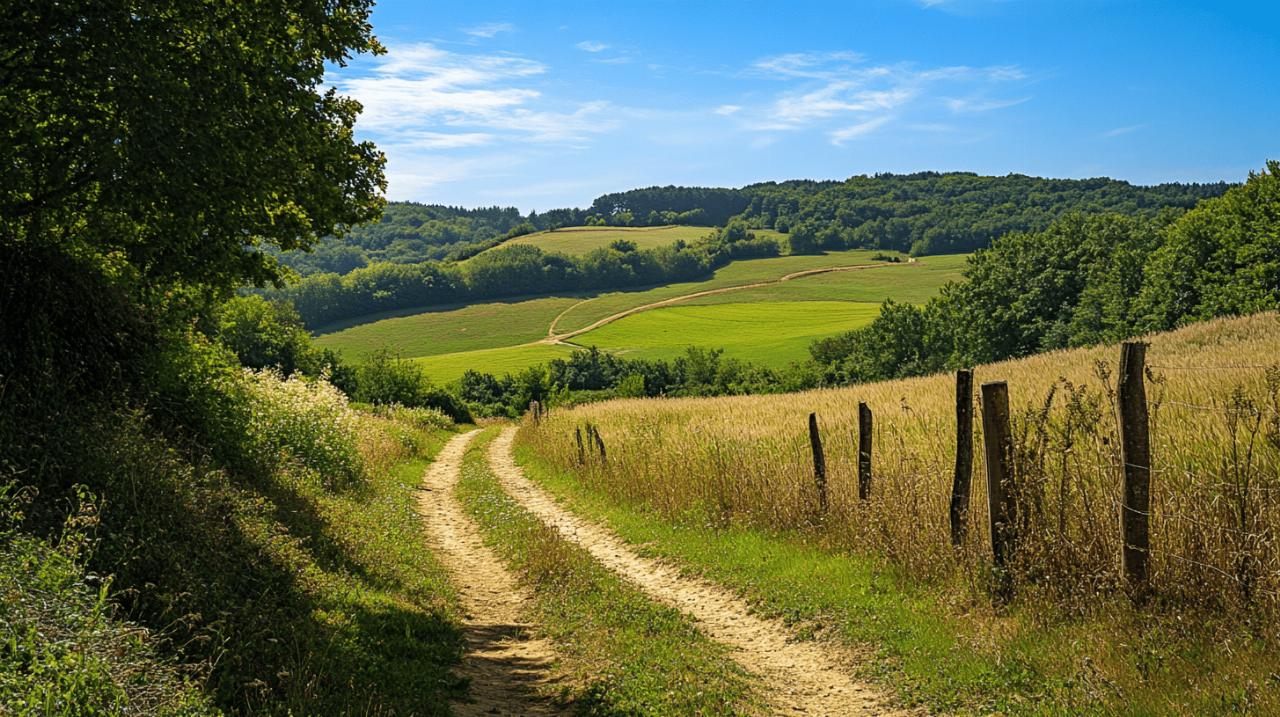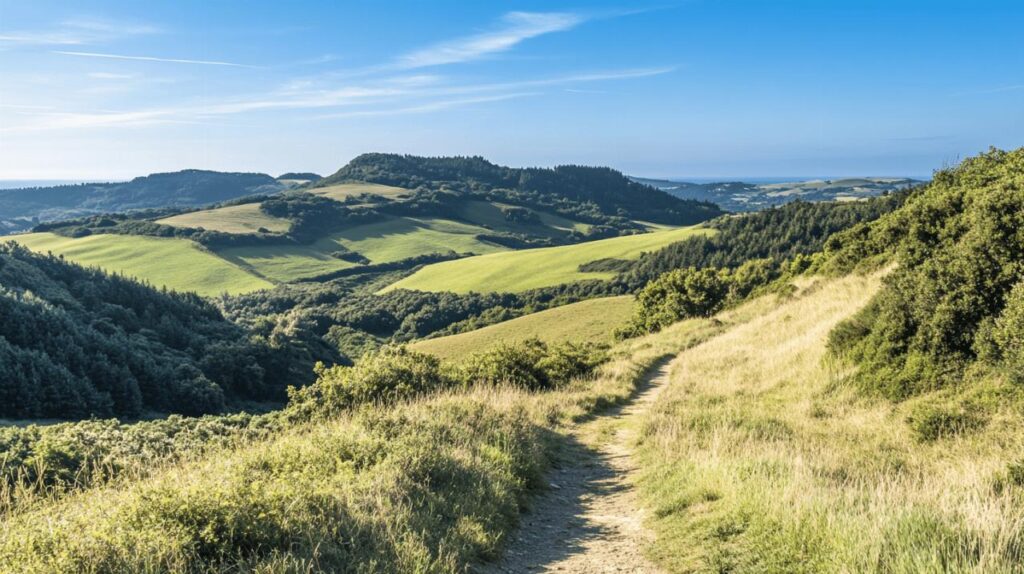The Vendée region of western France represents a paradise for hiking enthusiasts with its diverse landscapes ranging from stunning Atlantic coastlines to lush forests and historic villages. With approximately 2,500 kilometers of marked trails traversing this picturesque department, walkers of all abilities can discover natural wonders and cultural heritage at every turn. Whether you’re seeking a challenging coastal hike or a gentle stroll through idyllic countryside, Vendée offers an abundance of options for outdoor enthusiasts.
Coastal paths of vendée
The Atlantic coastline of Vendée provides some of the most breathtaking walking routes in France. Just as Cammina Sicilia offers spectacular Mediterranean coastal trails in Sicily, the Vendée coastal paths deliver their own unique charm along the Atlantic seaboard. The famous GR8 long-distance trail extends for 221 kilometers along the Vendée coast, offering hikers spectacular ocean views and diverse coastal ecosystems to explore.
The magnificent sentier littoral
The Sentier Littoral, or coastal path, stretches approximately 150 kilometers along the Vendée shoreline. This well-maintained route takes walkers through a variety of landscapes, including the renowned ‘La Côte de Lumière’ (Coast of Light), a 74-kilometer section known for its exceptional sunshine and golden beaches. A particularly noteworthy segment is the 31-kilometer stretch between Les Sables d’Olonne and Brem sur Mer, where hikers can experience the transition between sandy beaches and more rugged coastal formations.
Hidden gems along the atlantic shoreline
Beyond the main coastal route, Vendée harbors numerous hidden treasures for walkers willing to explore. The island of Noirmoutier, connected to the mainland by a causeway, offers serene walking paths through salt marshes and pine forests. Similarly, the more remote Île d’Yeu provides walkers with a network of trails circling its perimeter, revealing dramatic cliffs and secluded coves. The 23-kilometer section from Saint Jean de Monts to Saint Gilles Croix de Vie presents a wonderful variety of coastal scenery, with expansive beaches giving way to rocky outcrops and natural sand dunes.
Forest Trails in the Vendean Countryside
Moving inland from the coast, Vendée’s countryside reveals a different but equally captivating landscape for hikers to discover. The region’s forests offer cool, shaded paths that provide welcome relief during the warmer months while showcasing the rich biodiversity of western France.
Ancient woodland routes in mervent-vouvant forest
The Mervent-Vouvant Forest stands as one of Vendée’s most significant woodland areas, with networks of paths winding through ancient oak and chestnut trees. These routes often follow centuries-old tracks once used by local villagers and merchants. Walking here feels like stepping back in time, with the forest canopy creating a tranquil atmosphere perfect for contemplative hiking. The forest surrounds three artificial lakes, adding waterside walking options to the woodland experience.
Seasonal walking experiences through deciduous landscapes
The changing seasons transform Vendée’s forest trails throughout the year. Spring brings carpets of wildflowers and emerging foliage, while summer offers deep shade beneath fully developed tree canopies. Autumn creates perhaps the most spectacular walking conditions as the deciduous trees display their golden and russet hues. Winter reveals different aspects of the landscape, with bare branches allowing greater visibility through the forest. The 22-kilometer GR8 section from Saint Vincent sur Jard to La Tranche sur Mer passes through such forested areas, providing shelter from coastal winds while maintaining proximity to the sea.
Marshland Walks in the Marais Poitevin
The eastern part of Vendée encompasses portions of the remarkable Marais Poitevin, an extensive wetland system often referred to as the ‘Green Venice’ of France. These marshlands present a completely different hiking experience compared to the coastal and forest trails.
Navigating the green venice footpaths
Walking routes through the Marais Poitevin follow raised paths that meander between water channels and meadows. The landscape here has been shaped by centuries of human intervention, creating a harmonious blend of natural and cultivated environments. The Marais Breton, covering more than 45,000 hectares, offers extensive walking opportunities through this distinctive wetland landscape. The 28-kilometer trail from Bouin to La Barre de Monts takes hikers through these marshes, revealing a unique ecosystem that changes subtly with the seasons and water levels.
Birdwatching opportunities along wetland trails
The marshlands of Vendée provide exceptional opportunities for wildlife observation, particularly for bird enthusiasts. The wetland environments attract numerous migratory and resident bird species, making the walking trails doubly rewarding for nature lovers. Quiet observation points are situated along many routes, allowing hikers to pause and appreciate the rich avian life without disturbance. Walking quietly along these paths during early morning or evening hours increases the chances of spotting herons, egrets, and various waterfowl in their natural habitat.
Historical routes through vendean villages
Beyond natural landscapes, Vendée’s hiking trails connect walkers to the region’s rich cultural heritage through routes that link historic villages and significant landmarks.
Medieval pathways connecting rustic settlements
Many of today’s walking routes follow ancient pathways that have connected Vendean communities for centuries. These trails often lead through picturesque villages with traditional architecture, revealing the rural character that has defined this region throughout history. Walking these paths provides insights into local life both past and present, with opportunities to pause in village squares or visit local markets. These routes often incorporate sections of the Santiago de Compostela pilgrimage path, which has traversed this region since medieval times.
Cultural landmarks along traditional walking routes
Hiking in Vendée frequently brings walkers into contact with historical sites and cultural landmarks. From ancient churches and chapels to windmills and agricultural buildings, the countryside is dotted with structures that tell the story of the region’s development. While not directly on hiking trails, the historical theme park of Puy du Fou lies within reach of several walking routes, offering an opportunity to complement natural exploration with cultural experiences. The varied landscape has witnessed significant historical events, particularly during the counter-revolutionary War in the Vendée, and information boards along many trails provide context to these historical connections.
Practical information for vendée hikers
To make the most of Vendée’s extensive trail network, hikers should consider practical aspects such as seasonal conditions and necessary equipment.
Seasonal walking recommendations and weather considerations
The Vendée region experiences a mild Atlantic climate, making hiking possible throughout the year. Spring and autumn generally offer ideal walking conditions with moderate temperatures and fewer visitors. Summer brings warmer weather, perfect for coastal walks with opportunities for swimming breaks, though forest trails provide welcome shade during hot periods. Winter walking can be rewarding with clear, crisp days, particularly along coastal paths where the Atlantic light creates spectacular vistas. For those interested in Nordic Walking, Saint Jean de Monts offers five dedicated trails covering more than 45 kilometers, providing structured fitness opportunities in beautiful surroundings.
Essential kit and local walking resources
Proper preparation enhances any hiking experience in Vendée. Basic equipment should include comfortable walking shoes, weather-appropriate clothing, water, and detailed maps or guidebooks. Local tourist offices provide valuable information about trail conditions and accessibility, with the main season offices open from 9 am to 7 pm during summer months. Accommodation options ranging from campsites to bed and breakfasts are available throughout the region, allowing for multi-day hiking adventures. The well-developed tourism infrastructure includes facilities in major centers like Les Sables d’Olonne and Saint Jean de Monts, where hikers can find supplies and information before setting out on their chosen routes.


